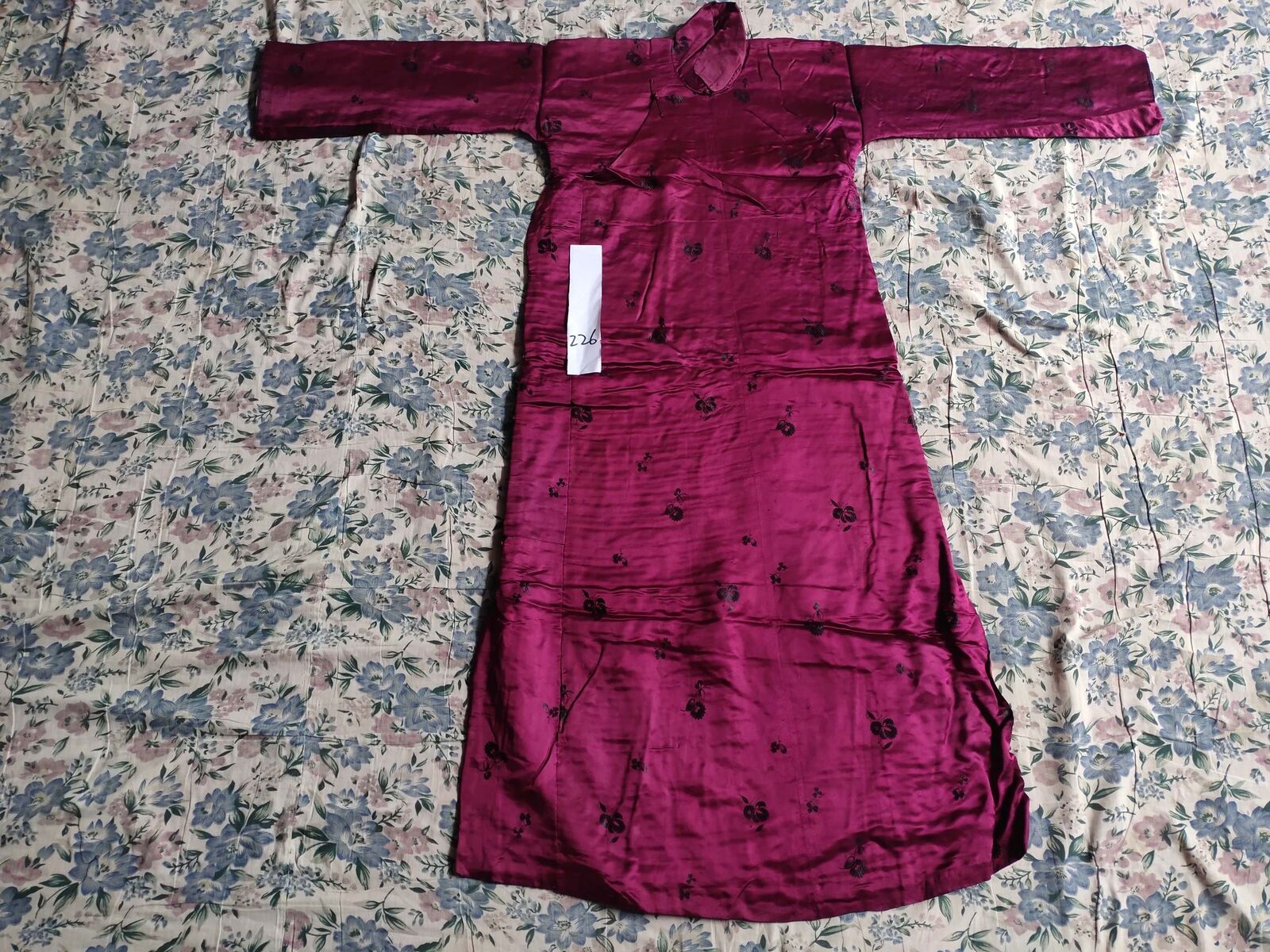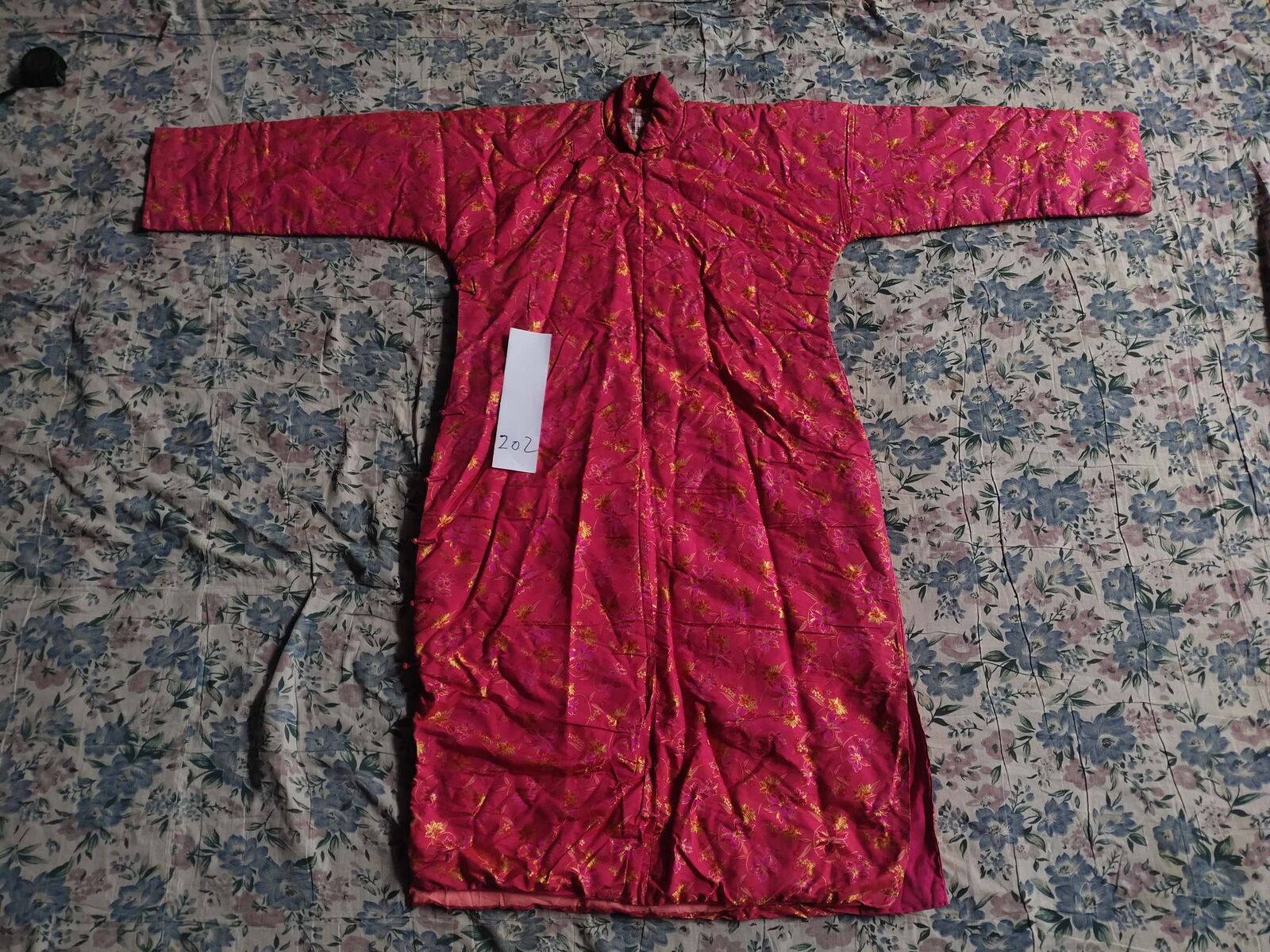-40%
🔥Antique 19th c. Asian Chinese Qing Silk Embroidery Textile Coin Purse - WOW
$ 250.8
- Description
- Size Guide
Description
This is a gorgeous and delicately crafted Antique 19th c. Asian Chinese Qing Silk Embroidery Textile Coin Purse, comprised of silk and gold thread, and approximately dating from the late 19th - very early 20th century. This piece depicts a brown bird, possibly a sparrow, perched on a tree branch with vibrant purple flowers. The central image is surrounded by beautiful embroidered traditional Chinese scroll work and motifs. The gold thread is finely woven in the "Forbidden Stitch" technique that is synonymous with the best of Chinese textile artistry. I believe that this item is a coin purse, but it may be something else. I have not opened up the frame to confirm. Approximately 14 x 14 inches (including frame.) Actual artwork is approximately 7 x 7 inches. Very good condition for age, with no damage or visible wear (please see photos.) Vintage frame has mild scuffing and edge wear. Acquired from an affluent estate in Orange County, California. Priced to sell. Please check out my other listings for more wonderful and unique artworks!About "Forbidden Stitch":
The forbidden stitch was used extensively on apparel and accessories created for women during the Qing Dynasty. As Carol Dean Krute, the Atheneum's curator of costume and textiles, notes: "In the mid-19th century, the Forbidden City was home to 3,000 female servants and concubines who awaited the emperor's pleasure. Many girls who languished behind the palace walls were illiterate, but highly trained in embroidery skills. Could it be that the women imprisoned in the imperial enclave employed the forbidden stitch to while away endless time?"
It's an interesting speculation, and not a little romantic. Still, the history of the forbidden stitch remains shrouded in mystery. One legend maintains that needle workers specializing in the stitch's intricate execution went blind. A more likely explanation for experts is that the stitch was named for the imperial enclave in Beijing, the Forbidden City.
The forbidden stitch, when done by an expert embroiderer, resembles a tiny circle dimpled at the center, formed by winding the thread around an embroidery needle a few times before plunging the needle through the middle of the coil and through the fabric. The stitch, also known as the Peking knot (Peking is the former name of Beijing) or the French knot, was probably introduced to China through contact with western cultures during the Ming Dynasty (1368-1644).
Whatever the source, the forbidden stitch can be appreciated in the magnificent display of apparel and accessories mounted at the Atheneum. The uncut robes made in imperial workshops and collected by Frank W. Cheney's rank prominently.




















